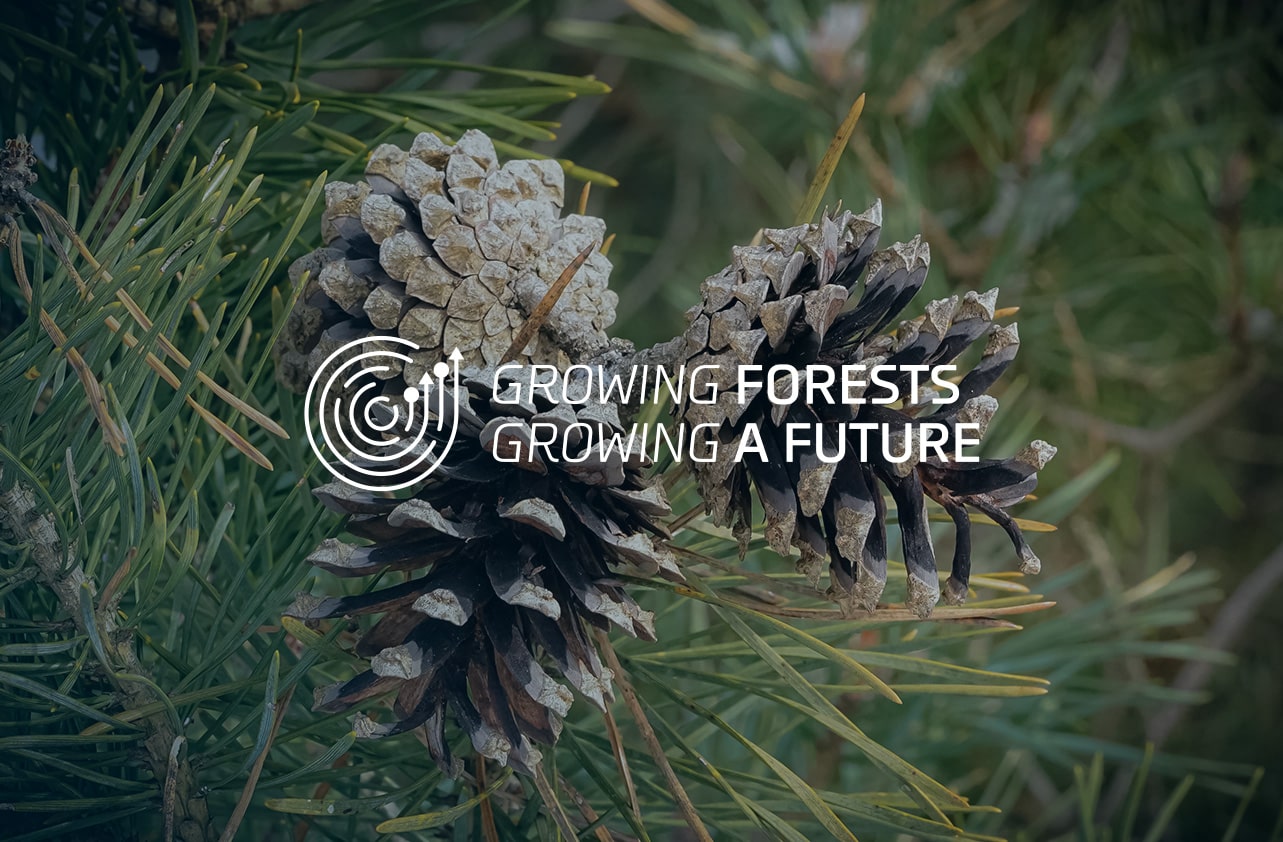Over the next few months, watch out for the Tree Profile Series! For our third piece in the series, there is much to discover about the Scots pine.
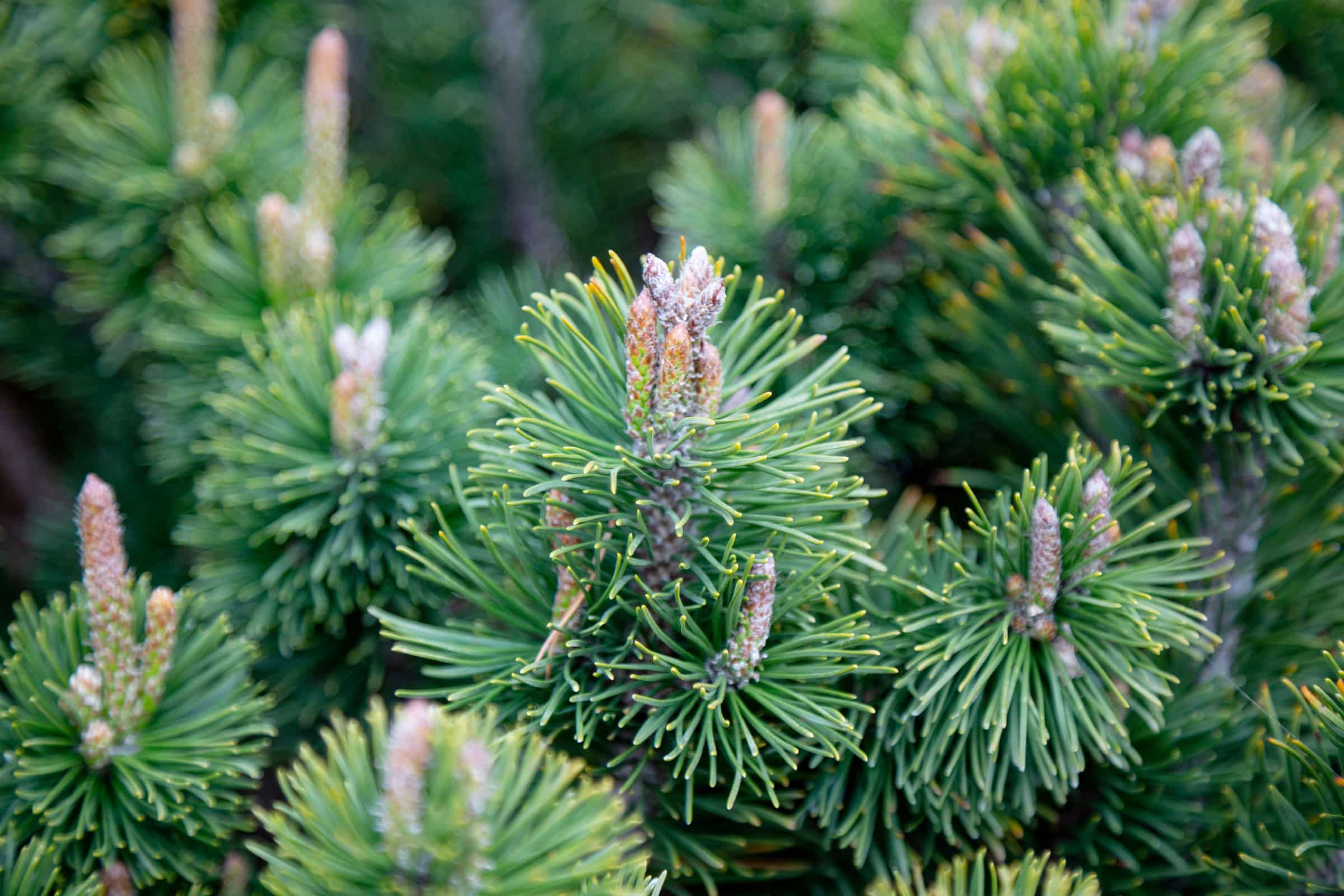
The Scots Pine is also referred to as the Scotch pine (US), the European redwood or the Baltic pine. In the right conditions, a Scots pine can reach ages of more than 500 years old.
Latin/horticultural label: Pinus sylvestris
Size: 35 metres in height, with a 1 metre diameter
Type: Evergreen softwood
Sun Exposure: Full to partial sun
Soil Type: Moist, well-drained soil but has some drought tolerance
Soil pH: Acidic to neutral
Native to: Eurasia
When young, the pine tree bark is thin, flaky and orange-red in colour. As they age, the bark morphs into gray-brown in maturity, but at the top of the tree, newer branches can retain their orange-red colour. Leaves of the pine tree are commonly referred to as needles, and they have a blue-green colour. Their evergreen nature makes them a popular subject in wintertime paintings and photographs, with their snow-capped cones.
The Scots pine have twigs that are green-brown and hairless. When the needles are broken, they can have a fine white fringe of hairs.
The Scots pine is a pioneer tree species and highly adaptable. There are stands all over Eurasia; from the polar circle in the north to the south of Turkey and from the West of Germany to Asia in the East. Scots pine prefer continental climes and have an altitude limit of 1700-2000 metres.
This tree is not susceptible to the European spruce bark beetle, the main cause for decimating forests in Germany, France and other parts of Europe.
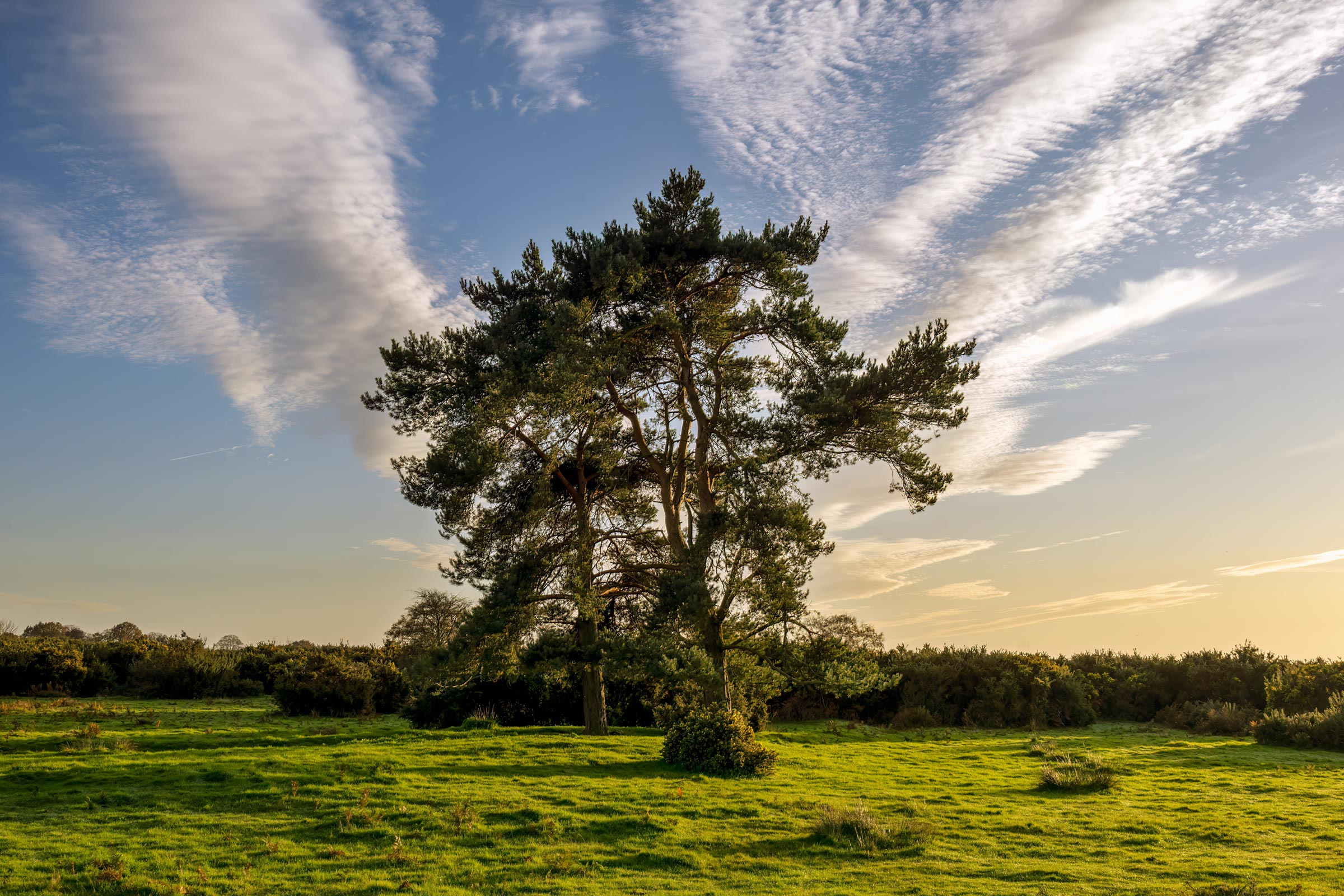
The Scots pine is tolerant of poor soils, drought and frost. However, it does not respond well to air pollution and salt-laden winds.
Propogation
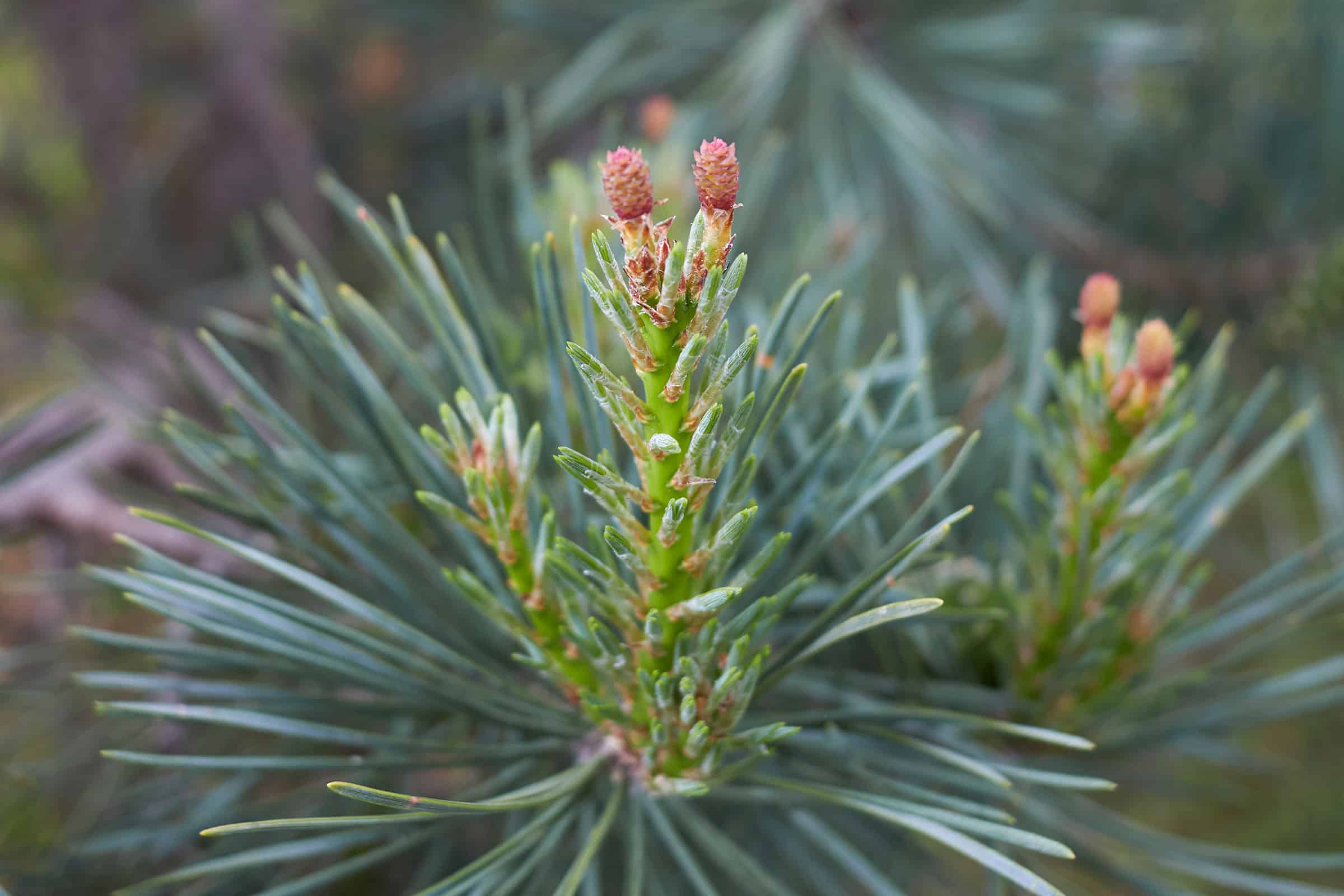
(female flowers)
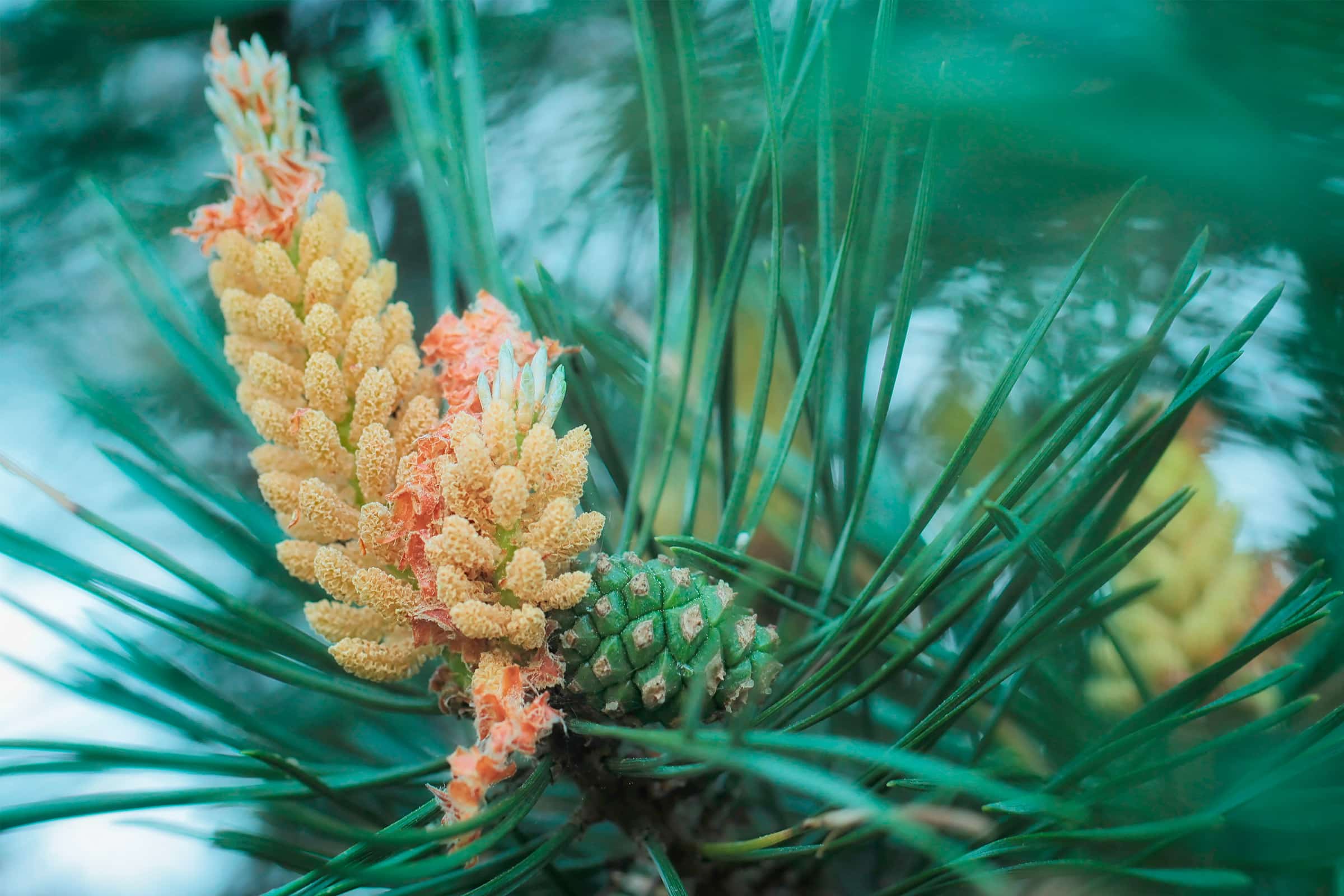
(male flowers)
Scots pine is monoecious, producing both male and female flowers on the same tree. Male flowers are yellow and deep orange and cone-shaped; while the female flowers are small and red-purple in colour. The male flowers appear at the base of new shoots while female flowers are at the tips of the shoots.
You’ll immediately be able to identify the cone shaped seed pods all over Europe. They typically measure 5-10 cm in length and have a width of 3-7 cm. Children like collecting them from the forest floor and submerge them in water—the protruding ‘scales’ of the seed pods contract when wet!
They’re popular decorative items around the home during winter and feature frequently as biodegradable Christmas tree ornaments.
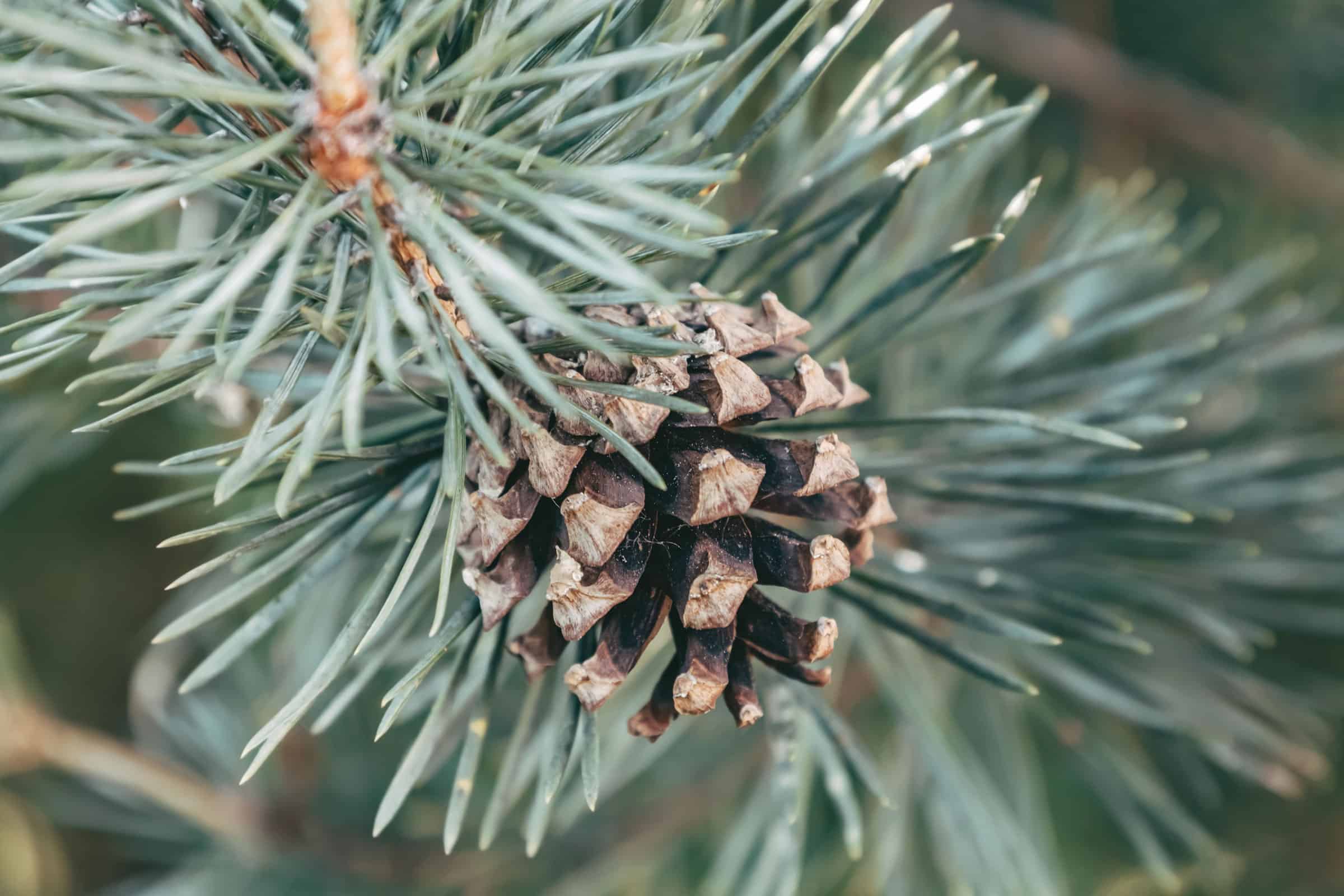
(seed pods/cones)
The fruits/nut are cone shaped and release winged seeds that pollinate by wind currents.
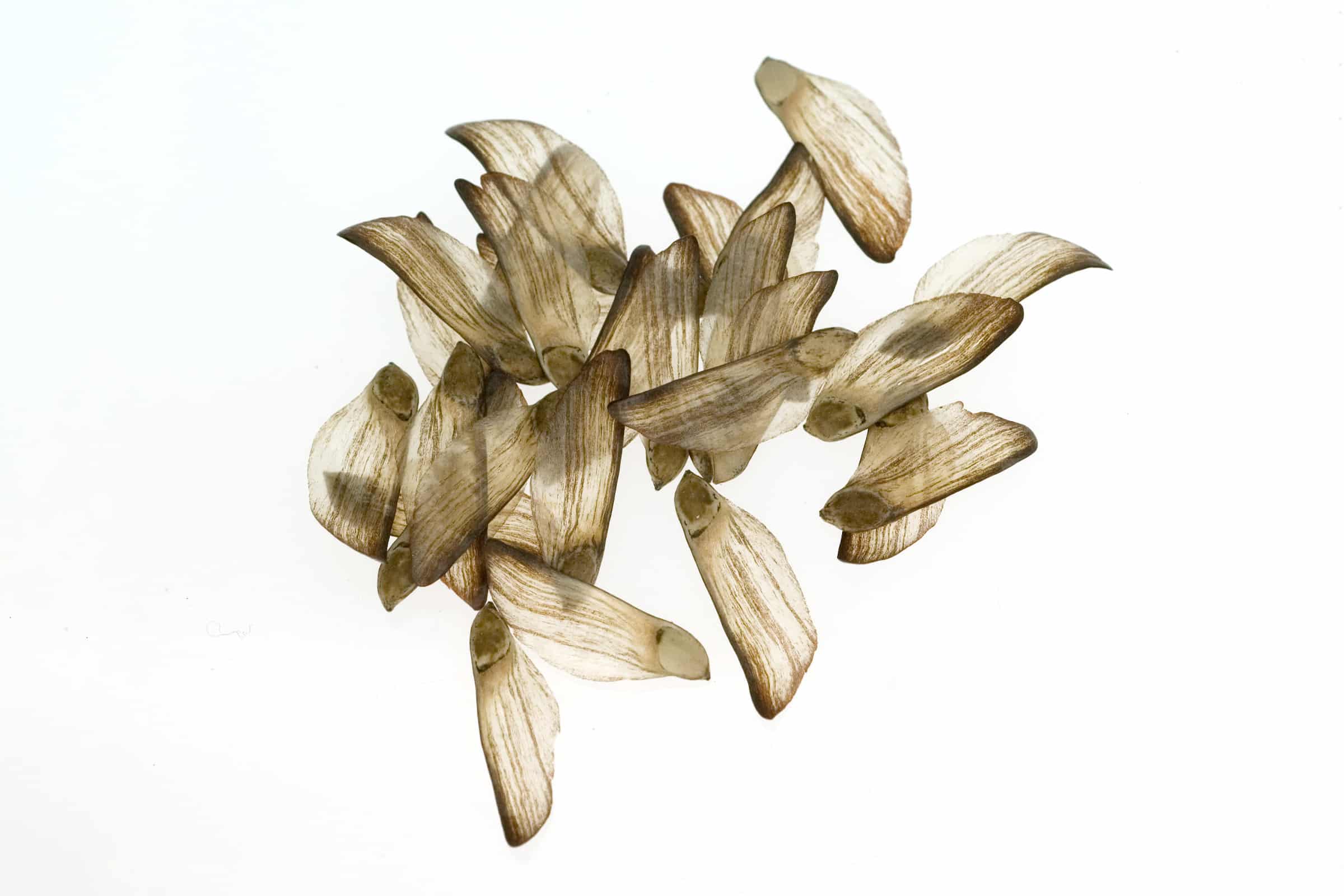
(winged seeds)
Supporting people
Scots pine timber is one of the strongest softwoods available and is highly valued for construction and furniture. It is also a popular source of timber for infrastructure—often used as telegraph poles, gate posts and fencing.
Scots pine resin is used to make turpentine. In Austria, the pine nut is used to make homemade schnapps. The roots can be used to make tar and boiling the cones in water creates a liquid that can be used as dye. When cones are dried out completely, they’re good for kindling.
Weaknesses in Germany
The Scots pine is a hardy, drought tolerant tree that is not susceptible to the European spruce bark beetle.
For more info visit Waldwissen.

